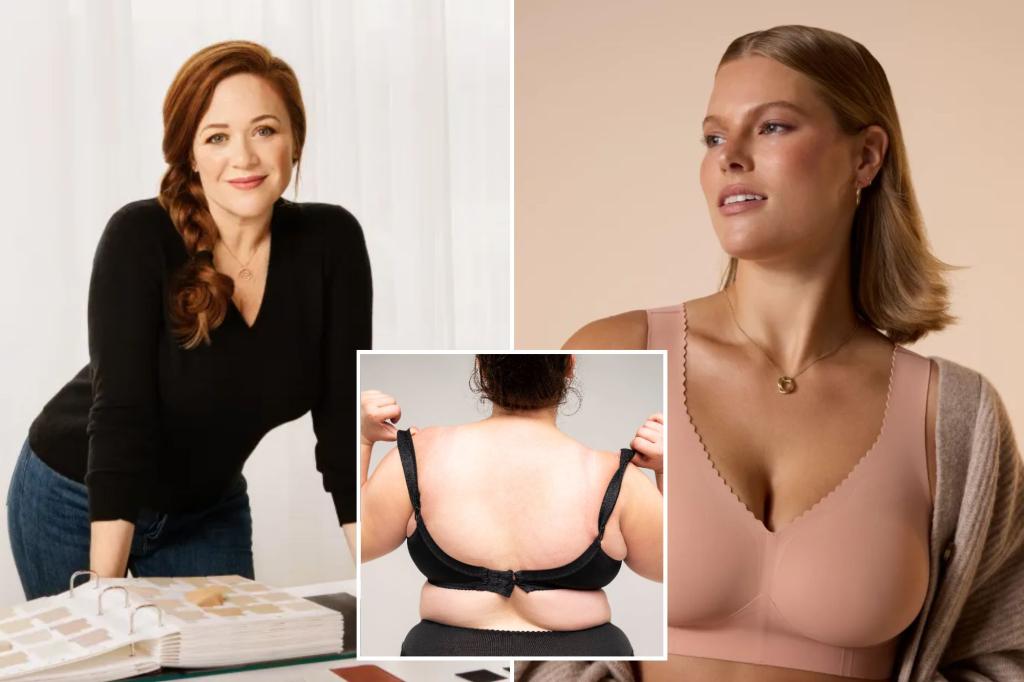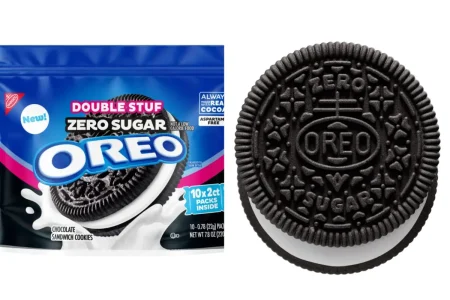Finding Comfort in the Right Bra: Breaking Free from Pain and Discomfort
For countless women, the daily struggle with uncomfortable bras has become an accepted part of life. Deep shoulder grooves, underwire marks, and constant discomfort are normalized as the unavoidable cost of support and appearance. However, as Bree McKeen discovered through her personal journey, this painful compromise isn’t necessary. After years of enduring the torture of traditional underwire bras that left lasting impressions on her skin, McKeen recognized that the problem wasn’t her body but the outdated design of the bras themselves. “I used to have deep grooves in my shoulders that were still there when I woke up in the morning,” she shared with The Post, “but I knew in my gut that there had to be a better way.” This realization became the catalyst for a revolution in bra design that prioritizes both comfort and support, especially for women with larger busts who have historically been underserved by the lingerie industry’s focus on appearance over function.
The challenge for many women, particularly those with larger cup sizes, is finding a bra that provides adequate support without sacrificing comfort. While smaller-chested women might comfortably opt for soft bralettes, this simply isn’t practical for everyone. McKeen, who wore a 34G, faced this dilemma daily, especially in professional settings. “I wanted to be comfortable, but I sure as hell couldn’t walk into a room full of finance guys as a 34G in a ‘comfort bra,'” she explained. The limited options pushed McKeen to draw upon her engineering background and conduct extensive anatomical research to develop a solution. Her experiences and expertise culminated in the creation of Evelyn & Bobbie, a wireless bra company with an innovative approach to support. Their patented lift system redistributes weight from the shoulders across the core, creating what McKeen describes as “a 360° ergonomic lift – achieved through bonded layers of technical fabric, not rigid parts.” This design philosophy challenges the traditional cup and band sizing model, which research suggests frequently results in improper fits for many women.
The implications of wearing ill-fitting bras extend far beyond temporary discomfort; they can contribute to serious health issues that affect daily life. The visible signs are familiar to many: red marks, indentations, and skin irritation. However, the wrong bra can also cause neck and back pain, tension headaches, poor posture, and even affect the lymphatic system and emotional wellbeing. Despite these serious concerns, many women have never learned how to properly assess whether a bra genuinely supports their body or is causing harm. “The truth is, most of us were never taught how to properly assess whether a bra is actually serving our bodies,” McKeen noted. “We just put up with the discomfort.” Evelyn & Bobbie addresses these issues with highly responsive materials that mold to individual body shapes without compromising support. Their designs include built-in flex zones that adapt to various ribcage and bust sizes, allowing wearers to “literally hand stretch the bras to a perfect fit,” according to McKeen. This adaptability means that even women with larger busts can achieve the support and shape they desire while maintaining comfort and freedom of movement.
A truly functional bra should work harmoniously with the body rather than fighting against it. McKeen emphasizes that the ideal bra “should feel like a second skin – one you barely notice throughout the day.” To achieve this goal, she identifies six essential features that every woman should consider when selecting a bra. First, wire-free lift demonstrates that proper engineering and materials can provide structure and shape without painful metal underwires. Second, wide, supportive straps and bands distribute weight evenly to reduce strain on the neck, shoulders, and spine. Third, four-way stretch fabric ensures flexibility, breathability, and movement with the body, promoting proper circulation. Fourth, a posture-strengthening design with a well-structured back balances bust weight and encourages healthy spinal alignment. Fifth, the absence of hard seams and abrasive tags prevents skin irritation, with soft, flexible seams and printed or strategically placed labels. Finally, a fit that prioritizes function recognizes and accommodates the uniqueness of each body, moving beyond standardized sizing to address individual needs.
The revolutionary approach to bra design championed by McKeen represents a significant shift in thinking about women’s undergarments. For generations, women have been conditioned to believe that looking good necessarily involves physical discomfort – that support and aesthetics come at the cost of comfort and well-being. This outdated narrative has persisted despite mounting evidence of the physical and emotional toll taken by uncomfortable, poorly designed bras. McKeen’s work challenges this false dichotomy, proving that women can have both support and comfort without compromise. “You deserve to feel supported, lifted, and at home in your own skin,” she asserts. “We’ve been told that looking good means sacrificing how we feel. But that narrative is outdated, and it’s time for a new one.” This perspective represents not just a product innovation but a paradigm shift in how we think about women’s bodies and comfort. By prioritizing ergonomic design and adaptive materials over rigid structures and standardized sizing, companies like Evelyn & Bobbie are empowering women to demand better – to reject discomfort as an inevitable part of looking professional or put-together.
At its core, the movement toward more comfortable, supportive bras is about more than just undergarments – it’s about recognizing women’s right to physical comfort in all aspects of life. For too long, women have silently endured daily pain and discomfort from their most basic clothing items, accepting it as normal or necessary. The emergence of innovative designs that challenge this status quo signals a broader cultural shift toward valuing women’s bodily comfort and well-being. As more women discover that they don’t have to choose between looking good and feeling good, the demand for thoughtfully engineered bras will likely continue to grow. This evolution in lingerie design serves as a reminder that many of our accepted discomforts are not inevitable but rather the result of inadequate design solutions that fail to consider diverse body types and real-world needs. By rejecting the notion that pain is the price of beauty and embracing designs that honor both form and function, women can break free from their painful bra ruts and discover what true support feels like.













